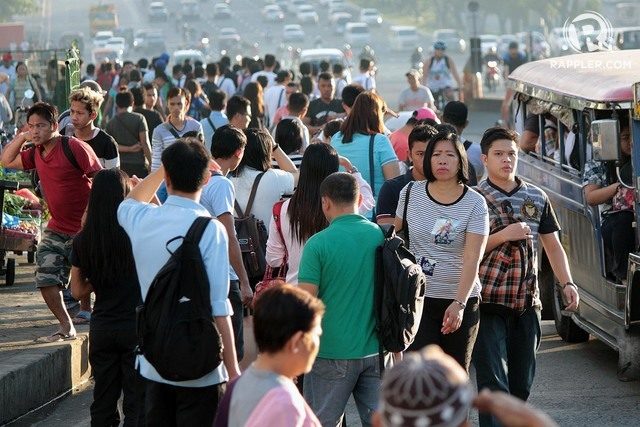SUMMARY
This is AI generated summarization, which may have errors. For context, always refer to the full article.

PAMPANGA, Philippines – By 2020, all buses, jeepneys, and public utility vans across the country will be modernized, organized, and put under an automated fare collection system, the transportation department said.
“The routes will be changed in a more efficient way. We are looking at two to 3 years before all PUVs (public utility vehicles) will be modernized,” Transportation Assistant Secretary for Road Transport and Infrastructure Mark de Leon told reporters on the sidelines of the signing of a memorandum of understanding (MOU) on a P1.5-billion loan facility for PUV cooperatives.
At the department’s headquarters in Clark, Pampanga, Transportation Secretary Arthur Tugade signed the MOU with Development Bank of the Philippines (DBP) Chairman Alberto Romulo to jumpstart the PUV modernization program.
The DBP will provide loans to qualified cooperatives to finance the acquisition of new PUVs. There are 438 registered cooperatives under the Office for Transportation Security. (READ: Is the PUV modernization program ‘anti-poor?’)
But before the bank can provide loans, the Department of Transportation (DOTr) will have to wait for the final public transport route planning of 1,600 local government units (LGUs).
“We are talking to LGUs to capacitate them on the local public transport route planning. That will be the basis for the issuance of franchises [by the Land Transportation Franchising and Regulatory Board]. The route plan will state if this specific route will be for jeeps or buses or UV Express. It will also state the number of units,” De Leon said.
For Metro Manila, Davao, and Cebu, De Leon said the DOTr will conduct the route plan study because of the areas’ complexities. “But for low-class municipalities, the LGUs will do their own.”

Automated fare collection for all
By 2020, all jeepneys should be powered by Euro 4 engines or electrically powered engines instead of Euro 2 engines, according to the DOTr.
“The local transport route plan will be the basis for the computation of number of jeepneys. Baseline number is 200,000 PUJs. There might be more because some existing multicab routes will be upgraded to jeepney routes,” De Leon said.
The DOTr is also likely to require all PUVs to install closed-circuit television (CCTV) cameras, a GPS navigation system, speed limiters, dashboard cameras, and Wi-Fi.
De Leon added that his office is going to modernize the way PUVs operate through a mandatory automated fare collection system, just like in Metro Manila’s mass transport railways.
The DBP said it will assist the transportation department in the design, development, and implementation of an automated fare collection system for the public road transport sector. (READ: Transport strike: Why pick on jeepneys to fix traffic problems?)
Last April 30, the DOTr also signed an MOU with the Land Bank of the Philippines (Landbank) to set up a P1-billion financing mechanism for individual jeepney operators via the Special Environment-Friendly and Efficiently Driven (SPEED) Jeepney Program.
The department said it is eyeing similar memoranda with various private financing institutions in the next months, geared toward pushing for the PUV modernization program. – Rappler.com
Add a comment
How does this make you feel?
There are no comments yet. Add your comment to start the conversation.